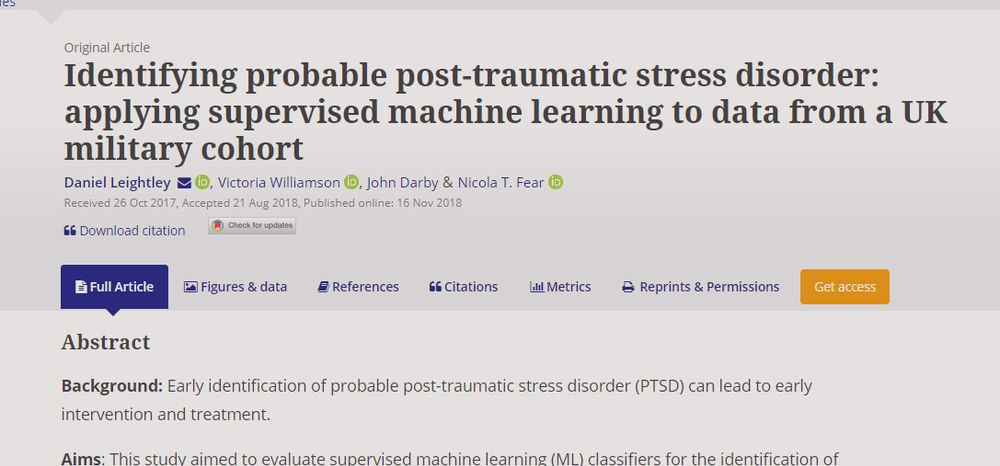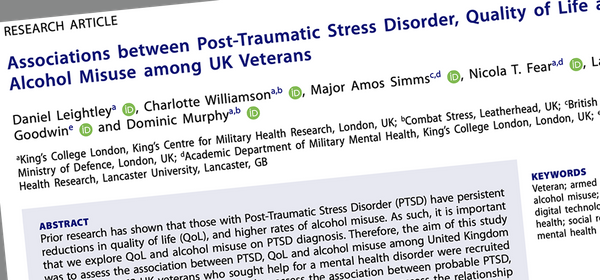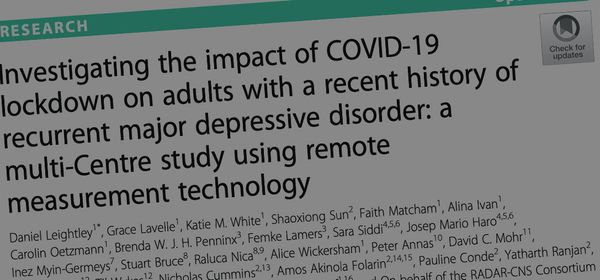Just Published: Identifying probable post-traumatic stress disorder: applying supervised machine learning to data from a UK military cohort
I recently blogged about identifying probable PTSD using Microsoft Azure Machine Learning Studio. In the post, I sought to explore the features and functionality of Microsoft Machine Learning Studio using the Adult Psychiatric Morbidity in England - 2007, which provides data on the prevalence of both treated and untreated psychiatric disorder in the English adult population (aged 16 and over). I was pretty impressed with the capability and output of Microsoft Machine Learning Studio; which was able to gain similar results as below.
What inspired that post was similar work I was doing at the King's Centre for Military Health Research which sought to detect probable PTSD in the Armed Forces using cohort data collected by the Centre. Supervised machine learning was trained on ~13,500 serving and ex-serving self-reported service exposure and a validated self-report measures (looking at physical and mental health) to model patterns of those with, and without probable PTSD. The paper was able to successfully detect probable PTSD cases; however sensitivity was low, which may impact generalisability. More work is needed to assess the validity of the framework.
The abstract is below, and you can read the full article here.
Background: Early identification of probable post-traumatic stress disorder (PTSD) can lead to early intervention and treatment.
Aims: This study aimed to evaluate supervised machine learning (ML) classifiers for the identification of probable PTSD in those who are serving, or have recently served in the United Kingdom (UK) Armed Forces.
Methods: Supervised ML classification techniques were applied to a military cohort of 13,690 serving and ex-serving UK Armed Forces personnel to identify probable PTSD based on self-reported service exposures and a range of validated self-report measures. Data were collected between 2004 and 2009.
Results: The predictive performance of supervised ML classifiers to detect cases of probable PTSD were encouraging when compared to a validated measure, demonstrating a capability of supervised ML to detect the cases of probable PTSD. It was possible to identify which variables contributed to the performance, including alcohol misuse, gender and deployment status. A satisfactory sensitivity was obtained across a range of supervised ML classifiers, but sensitivity was low, indicating a potential for false negative diagnoses.
Conclusions: Detection of probable PTSD based on self-reported measurement data is feasible, may greatly reduce the burden on public health and improve operational efficiencies by enabling early intervention, before manifestation of symptoms.



